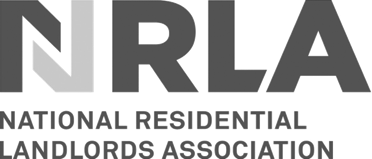The Top 5 Most Common Landlord Insurance Claims
The importance of specialist landlord insurance cannot be over-emphasised. With the risks higher for rental property than everyday residential property, the financial repercussions of not having adequate cover in place can be considerable. To help landlords plan to reduce risk, we look at the top five biggest risks posed to landlords, which inevitably result in landlord insurance claims.

The importance of specialist landlord insurance cannot be over-emphasised. With the risks higher for rental property than everyday residential property, the financial repercussions of not having adequate cover in place can be considerable. To help landlords plan to reduce risk, we look at the top five biggest risks posed to landlords, which inevitably result in landlord insurance claims.
Having analysed data from more than 3,000 landlord insurance claims over the past five years, Hamilton Fraser Total Landlord Insurance has revealed the most common problems faced by landlords.
1. Escape of water
One of the most common reasons for claiming on landlords insurance is escape of water. These claims generally arise due to leaking pipes, water tanks, baths, sinks or toilets. UK insurers are known to pay out £1.8 million for escape of water claims every day.
Damage caused by burst pipes can be extensive, with claim pay-outs considerable. However, there are some simple measures landlords can take to prevent such disasters. Regular maintenance is vital, especially winter maintenance. Pipes are more likely to freeze at this time of year, so it is important to carry out regular inspections to check for leaks, ensure pipes are insulated and the boiler servicing is up to date. Tenants should be encouraged to report any issues immediately before they turn into major problems.
If your property is unoccupied, be sure to set the thermostat to around 12 degrees Celsius during the winter months so that the heating comes on periodically. This will help to avoid freezing pipes.
2. Storm damage
Storm claims are seeing an increase as severe weather events and named storms become more common. Flash floods are one problem, but roof damage accounts for the majority of landlord insurance claims for storm damage.
With this in mind, it is advisable to include a visual inspection of the roof during interim inspection visits, looking out for loose or missing roof tiles, and broken guttering and downpipes.
3. Accidental damage
Accidental damage is another common landlord insurance claim. Such claims can arise from the likes of tenants hitting a water pipe when hanging a picture, broken windows, or damaged flooring.
Even if the damage was caused by the tenant, it is down to the landlord to cover the costs, which is precisely why landlord insurance is vital. Carrying out regular mid-term inspections will ensure any accidental damage is spotted and dealt with early on to ensure the ongoing safety of the tenants, and strict vetting of tenants will help keep such incidents to a minimum.
4. Break-ins
Forced or attempted entry by an intruder is another common landlord insurance claim. The damage caused by forced entry can be costly, so it is important for landlords to adequately invest in securing rental property.
Intruder alarms, motion sensors and high security locks should all feature on the agenda, but it is also important to educate tenants in the basics of security. Ensuring doors and windows are locked on leaving the property or during the night; keeping valuables out of sight of windows and ensuring any shrubbery that may be concealing entry points is kept maintained are just some of the tips landlords should be passing on to their tenants.
Landlords are also well advised to take steps to prevent unauthorised key duplication.
5. Subsidence
Subsidence – when the ground beneath a property moves rendering the foundations unstable – has become one of the most common landlord insurance claims in recent years, possible as a result of climate change leading to dryer summers. Pay-outs are generally high due to the potential far-reaching damage.
Landlords should be on the lookout for warning signs, particularly following the summer months. Such signs could include cracks appearing on exterior and interior brick walls; existing cracks expanding, rippling wallpaper that’s not caused by damp and sticking of doors and windows. Having subsidence treated early on is vital, otherwise the issue could escalate and lead to major problems.
Other landlord insurance claims
Other landlord insurance claims that don’t make the top five but that top the list for average pay-outs include fire, and malicious damage. And another common reason for landlords to look to make a claim is rent arrears. This is particularly the case of late, with rent arrears amongst private tenants having increased, and almost two thirds of landlords reporting that they have had to personally absorb losses.
Landlord insurance for rent arrears is a specialist type of cover. Regular landlord insurance will extend to buildings and contents cover, taking care of the most common types of claims. However, rent arrears insurance will need to be taken out as a separate policy, and it is important for landlords to be aware of the limitations of such cover. These can include claims only being paid if tenants have been forced to move out of the property due to a disaster such as fire or flood, or when tenants default on rental payments for more than a month, and official eviction proceedings are underway. Tenant default cover will usually only pay out for a set period, usually between six and twelve months.
The only type of landlord rent arrears insurance that will guarantee rent is paid every month, even when tenants default and even when the property is untenanted, is a guaranteed rent scheme.
Guaranteed rent, for guaranteed peace of mind
With the homes2let guaranteed rent scheme, there is no need to make a claim. Rent is simply paid in full every month by standing order. The scheme also includes property management, tenant sourcing and referencing, property repairs and maintenance, compliance checks, inventory reports and regular mid-term inspections as well as legal costs.
To learn more about the homes2let guaranteed rent scheme, we welcome you to get in touch.
Related Insights

Lockdown Latest: Rental Market Open for Business
Housing secretary Robert Jenrick has announced that the rental market in England will stay open during the new four-week lockdown starting 5th November. Renters remain able to move, letting agents and removal firms can continue to do their jobs, and property maintenance and repair contractors, cleaners and inventory clerks can enter properties, providing they adhere to COVID-secure guidelines.

A Guide to Screening International Rental Applicants
Screening is vital to assess tenants to ensure they will pay on time and take care of your property. But what specifically needs to be checked for overseas tenants to verify their right to rent? Read on to learn the ins and outs of the official process so that you know what's required to meet the strict Government guidelines.

Green Homes Grant Axed
The government’s Green Homes Grant has this month been axed just six months after its launch. The scheme was introduced to help private homeowners and landlords give their properties an eco-friendly upgrade, whilst creating work for tradespeople. But it closed on 1 April onwards to new applications.






